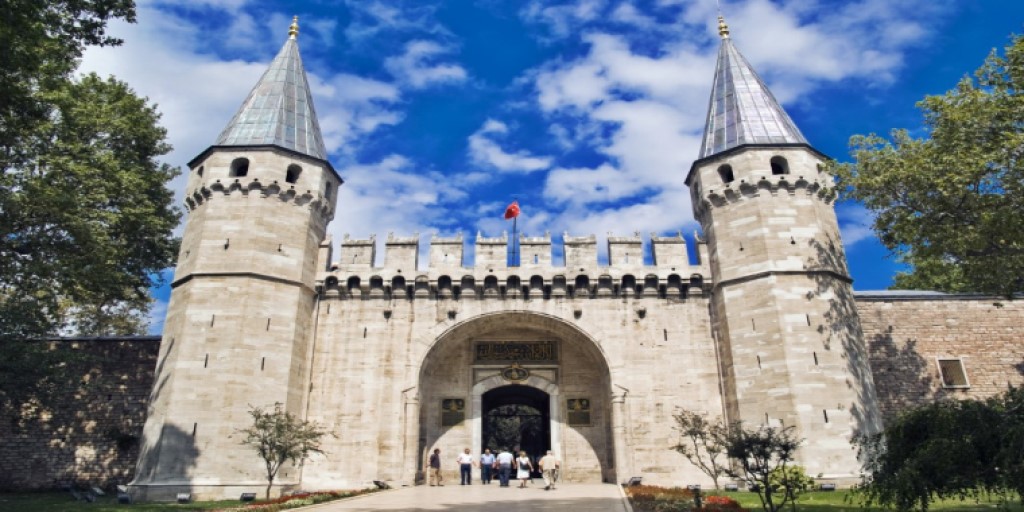Topkapı Palace
It is located on the promontory of the historical peninsula in İstanbul which overlooks both the Marmara Sea and the İstanbul strait. The walls enclosing the palace grounds, the main gate on the land side and the first buildings were constructed during the time of Fatih Sultan Mehmet (the Conqueror) (1451 – 81). The palace has taken its present layout with the addition of new structures in the later centuries. Topkapı Palace was the official residence of the Ottoman Sultans, starting with Fatih Sultan Mehmet until 1856, when Abdülmecid moved to the Dolmabahçe palace, functioned as the administrative centre of the state. The Enderun section also gained importance as a school.

Information about Topkapi Palace
The construction of the Topkapi Palace, which was built on a 700,000 square meter area in Sarayburnu, Istanbul, was initiated in 1460 by the order of Sultan Mehmet the Conqueror following the conquest of Istanbul. Completed in 1478, the palace was used as the administrative, educational and artistic center of the Ottoman Empire for about 4 centuries.
The magnificent structure, which is accessed from the Sultanate Gate in the direction of Hagia Sophia, consists of 4 intertwined avalanches. Today, around 300,000 square meters, the palace is surrounded by large gardens and squares.
Topkapi Palace, the Sultan and his family moved to Dolmabahçe Palace in the 19th century has lost its function, and has become the first museum of the Republic of Turkey on April 3, 1924. The museum’s 300,000-piece collection features unique pieces of cultural significance, such as porcelain, kitchenware, silverware, portraits from the various parts of the world, special goods and imperial treasures.
Topkapi Palace Departments
The palace, which has been used as a museum since 1924, consists of 4 courtyards and a harem section.
Babıhümayun
Babıhümayun is the main entrance gate of the Topkapi Palace Museum. On the left side of the door is the famous Cold Cross Street, on the right side is III. Ahmet Fountain is located. This is the first entrance to the palace. Entrance here is free. You can see the hungry inside, the Hagia Irene.
topkapı-palace-1
Since it was used as a weapons and trophy repository, the history of the Hagia Irini, which was called “Cebehane” in the past, stretches back to the 4th century. The religious structure used as a military museum at various periods is composed of three parts and attracts attention with the mosaics under the dome.
Babusselam
You can see that Ottoman and European military architectural elements were successfully synthesized in Babüsselam, which is used as the main entrance of the museum today. The last structure you can examine in this avud is Bab-ı Hümayun, whose religious motifs enriched its appearance and contains a book dedicated to Fatih.
Babusselam is the second entrance gate in Topkapi Palace Museum. This point is now a paid entrance to the museum. After this point, the structures that the Ottoman Empire has been using for centuries now meet.

Topkapi Palace Museum
Topkapi Palace Museum, an indispensable part of Istanbul’s list of places to visit for tourists Istanbul tour packages and architecture enthusiasts, has been wandering for centuries with its glory. The Topkapi Palace Museum is waiting for you with its architectural sense and its invaluable collection.